Infographic visualizing regional travel demand and carbon impact in Sweden’s coastal cities.
Hovvi
Hovvi explores how future electric hydrofoiling seaplanes can become a more comfortable and sustainable alternative for short-distance travel in Sweden’s coastal regions. With over 70% of the population living within 10 kilometers of the sea, regional mobility must evolve beyond carbon-intensive options. This project reimagines the interior of electric seaplanes with a focus on space-efficient, ergonomic seating and modular cabin design. A human-centered approach shaped the outcome, with immersive prototyping done in Gravity Sketch and early material decisions driving both form and function. Sustainable materials like PaperShell, Bcomp, and hemp mesh were chosen based on their lifecycle impact and circular potential. Hovvi proposes a travel experience that supports diverse body types, reduces environmental impact, and invites new expectations for domestic aviation.
Project Information
As Sweden transitions toward electric mobility, domestic aviation is positioned to change radically, especially along the coast, where waterways and urban hubs call for new transport solutions. Today, short-distance flights are among the most CO₂-intensive modes of travel. Despite Sweden’s extensive coastline and a growing electric aviation industry, passenger needs remain overlooked.
Hovvi is an interior concept for electric hydrofoiling seaplanes designed to elevate regional air travel. The project addresses comfort, sustainability, and inclusivity by rethinking aircraft interiors from the inside out. It explores how space can be used more efficiently, how diverse users can be supported ergonomically, and how material choices can reduce climate impact while enabling circularity.
The central question guiding this project was:
”How might we design a space-efficient and sustainable seating solution for electric hydrofoiling seaplanes that improves comfort, supports diverse body types, and positions the seaplane as a competitive alternative for short-distance travel?”
Methods
The project began with field research in Umeå and interviews with professionals in aviation and CMF (Color, Material, Finish). Human factors data was used to map out ideal posture and movement across user percentiles. Gravity Sketch was the primary design tool throughout, allowing for intuitive 1:1 sketching and rapid spatial prototyping in VR.
Parallel to form exploration, a material-focused development process was used. A CMF workshop guided early decisions based on tactile interaction, recyclability, and weight. Materials were selected not just for sustainability, but for how they could shape construction methods and disassembly.
Design for disassembly was a key strategy. Components were created to be separable by material category, enabling simplified maintenance, repair, and recycling. Materials were documented and organized on a physical tray to demonstrate hierarchy and surface logic.
Result
The final interior consists of a modular seating system and cabin layout tailored for short-distance electric flights. The seat is built with lightweight and renewable materials, shaped to provide comfort across body types. An integrated handle aids mobility in the narrow aisle and acts as a clear visual feature to support wayfinding and accessibility. The headrest contains sound-dampening material to improve acoustic comfort during flight.
The seating concept is space-efficient yet supportive, offering generous legroom and ergonomic comfort without unnecessary bulk. The design makes use of the cabin’s sidewalls, integrating features like cup holders, storage for small personal items and bags, a clothing hanger, and easy-reach compartments. At the back of the cabin, dedicated cargo space accommodates larger luggage, responding to needs identified during field interviews. A clean and modular CMF palette enhances the perceived space while allowing brand flexibility across different commercial operators.
By starting with material choices, Hovvi demonstrates how sustainable aviation interiors can be modular, maintainable, and emotionally engaging, while preparing for a shift in how we experience short-haul travel.
In collaboration with:

UID25 | Emilie Brand Ahlström – Grad project presentation
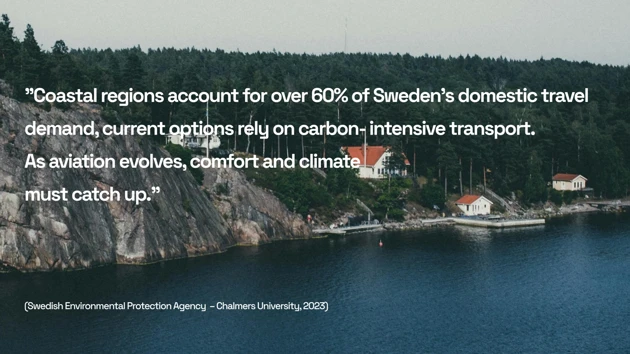
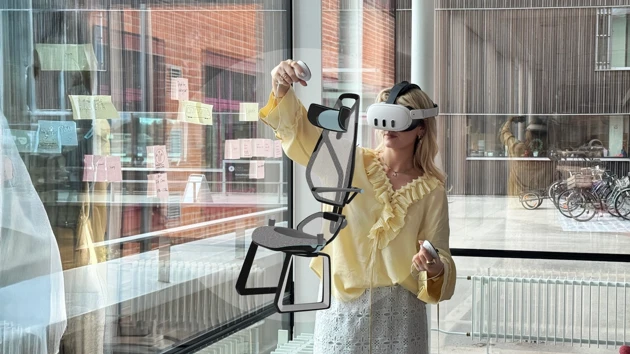
Gravity Sketch - main tool for developing seat proportions and posture in immersive scale.
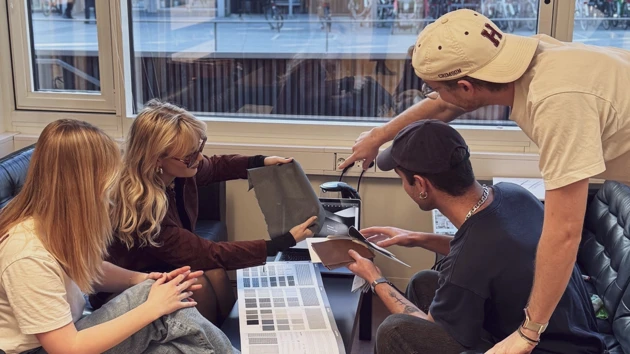
CMF workshop exploring tactile and sustainable materials at the beginning of the process.
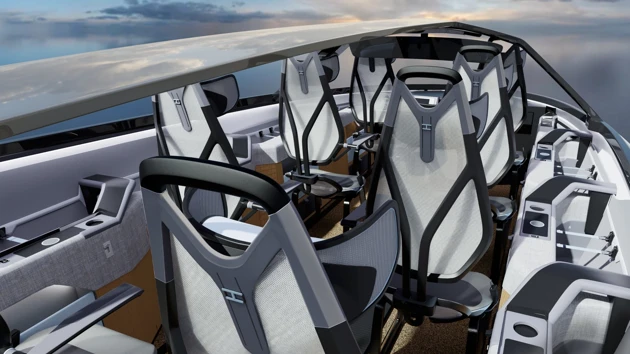
Final cabin design—showing seat integration, cabin design, and modular layout in context.
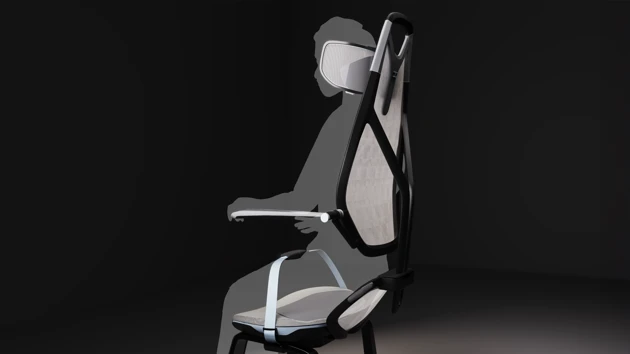
Human scale test—user sitting in seat to showcase comfort and posture.
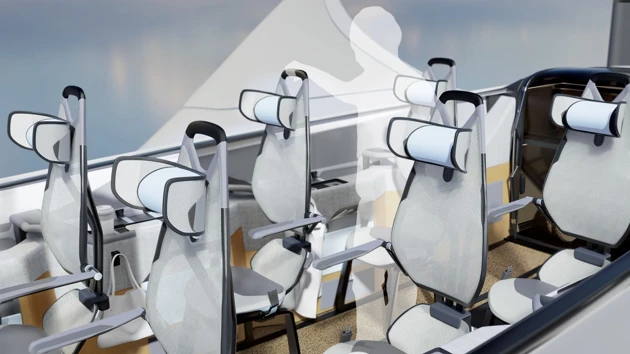
Interior interaction—user standing and gripping seat handle to show flow and accessibility.
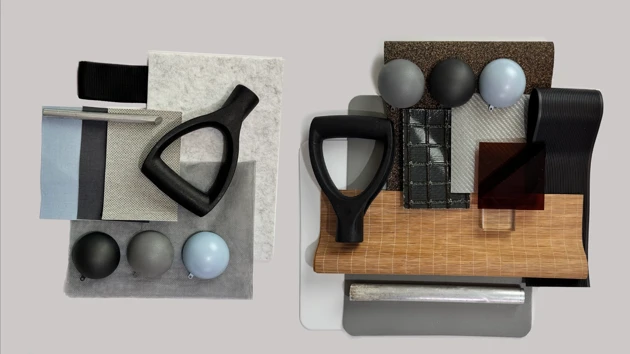
Material tray - physical samples of selected materials for structure, surfaces, and textiles.
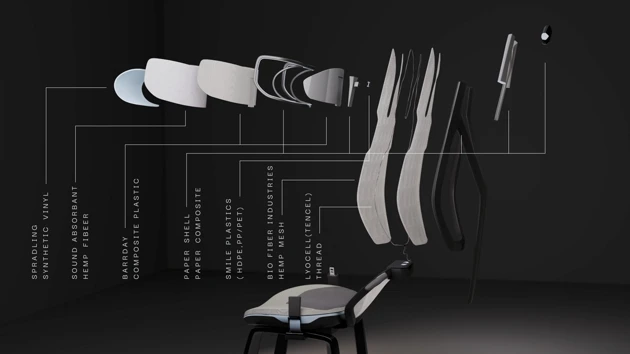
Exploded view showing components, materials, and disassembly logic of the seating unit.
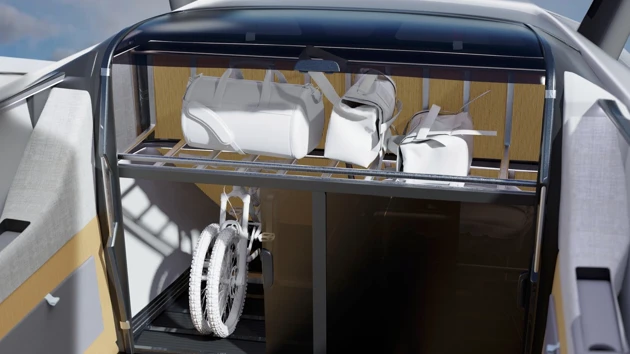
Rear cargo section designed for larger bags and accessibility during boarding.
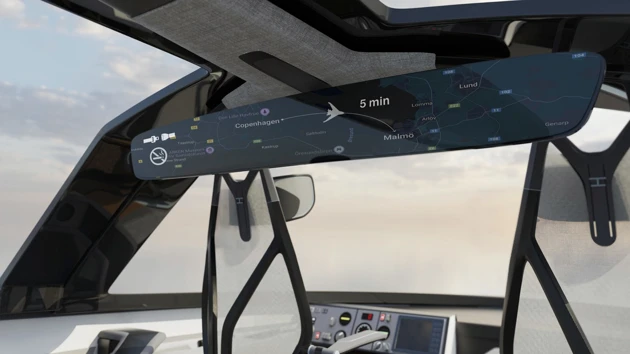
Passenger info screen for route visibility, remaining flight time, and safety indications.












